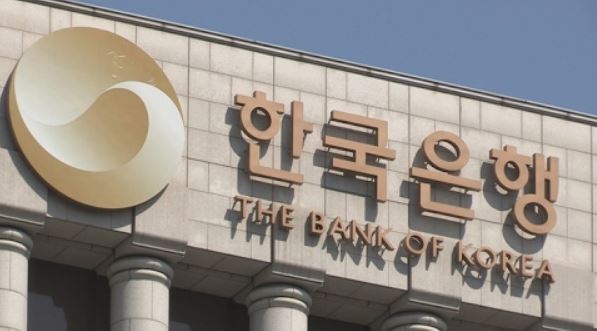S. Korea central bank freezes key rate at 1.75% for February
By YonhapPublished : Feb. 28, 2019 - 15:21
The South Korean central bank on Thursday held its policy rate unchanged at 1.75 percent for February amid widespread concerns over an economic slowdown.
The monetary policy board of the Bank of Korea voted to leave the base rate steady for the third straight month after raising it by a quarter percentage point in November.
The BOK‘s wait-and-see stance has been widely expected as Asia’s fourth-largest economy shows some signs of a downturn in exports and employment amid protracted U.S.-China trade tensions. (Yonhap)

Full text of BOK‘s statement on monetary policy decision for Feb.
The following is the full text of the Bank of Korea’s statement on its monetary policy decision for February. The central bank‘s monetary policy board decided Thursday to freeze the benchmark rate at 1.75 percent for the month.
The Monetary Policy Board of the Bank of Korea decided today to leave the Base Rate unchanged at 1.75 percent for the intermeeting period.
Based on currently available information the Board considers that the pace of global economic growth has continued to slow somewhat. Volatility in the global financial markets has continued the trend of decrease seen last month, as expectations of an adjustment to the Federal Reserve’s pace of monetary policy normalization and of progress in the U.S.-China trade negotiations have heightened. Looking ahead, the Board sees global economic growth and the global financial markets as likely to be affected by factors such as the degree of the spread of trade protectionism, the paces of monetary policy normalization in major countries, and the uncertainties concerning Brexit.
The Board judges that the domestic economy has sustained a rate of growth not diverging significantly from its potential level, as consumption has continued to grow modestly, although the adjustments in facilities and construction investment have continued and export growth has slowed. Employment conditions have been sluggish, with the number of persons employed having increased only slightly. Going forward the Board expects domestic economic growth to be generally consistent with the path projected in January. Consumption will continue to grow, while exports and facilities investment will also recover gradually toward the second half of this year, although the adjustment in construction investment will continue.
Consumer price inflation has slowed to the upper-0 percent range, in consequence mainly of declines in the prices of petroleum products and reductions in the extents of increase in agricultural, livestock and fisheries product prices. Core inflation (with food and energy product prices excluded from the CPI) has been at the 1 percent level, and the rate of inflation expected by the general public has been in the low- to mid-2 percent range. Looking ahead, it is forecast that consumer price inflation will fluctuate for some time below 1 percent, slightly lower than the path projected in January, and then run at the mid-1 percent level from the second half of this year. Core inflation will also gradually rise.
The domestic financial markets have been stable. Stock prices have risen mainly on expectations of an easing of the U.S.-China trade dispute. Long-term market interest rates and the Korean won-U.S. dollar exchange rate have fluctuated within narrow ranges.
The rate of increase in household lending has continued to slow, while housing prices have fallen slightly.
Looking ahead, the Board will conduct monetary policy so as to ensure that the recovery of economic growth continues and consumer price inflation can be stabilized at the target level over a medium-term horizon, while paying attention to financial stability.
As it is forecast that inflationary pressures on the demand side will not be high for the time being, and that the domestic economy will sustain a rate of growth that does not diverge significantly from its potential level, the Board will maintain its accommodative monetary policy stance. In this process it will judge whether to adjust the degree of monetary policy accommodation further, while closely checking future economic growth and inflation trends. It will also carefully monitor conditions related to trade with major countries, any changes in the monetary policies of major countries, financial and economic conditions in emerging market economies, the trend of increase in household debt, and geopolitical risks.






![[From the Scene] Monks, Buddhists hail return of remains of Buddhas](http://res.heraldm.com/phpwas/restmb_idxmake.php?idx=644&simg=/content/image/2024/04/19/20240419050617_0.jpg&u=20240419175937)








![[From the Scene] Monks, Buddhists hail return of remains of Buddhas](http://res.heraldm.com/phpwas/restmb_idxmake.php?idx=652&simg=/content/image/2024/04/19/20240419050617_0.jpg&u=20240419175937)

![[KH Explains] Hyundai's full hybrid edge to pay off amid slow transition to pure EVs](http://res.heraldm.com/phpwas/restmb_idxmake.php?idx=652&simg=/content/image/2024/04/18/20240418050645_0.jpg&u=20240419100350)

![[Today’s K-pop] Illit drops debut single remix](http://res.heraldm.com/phpwas/restmb_idxmake.php?idx=642&simg=/content/image/2024/04/19/20240419050612_0.jpg&u=)